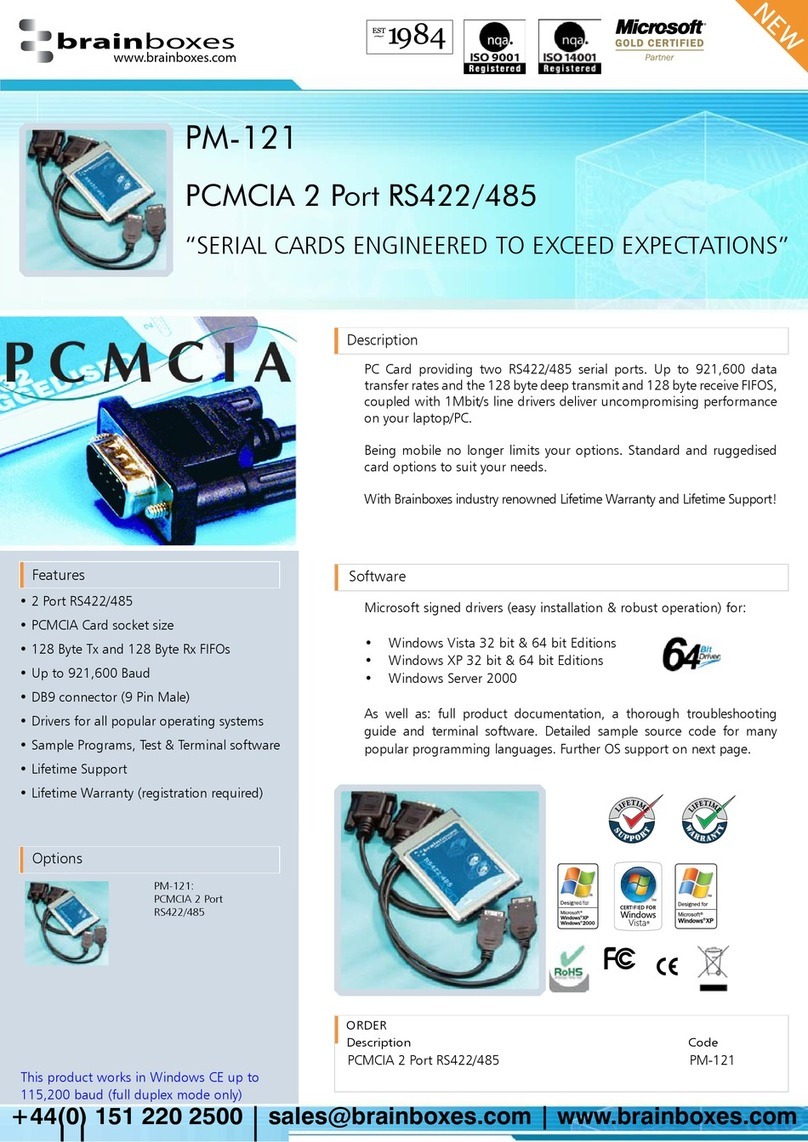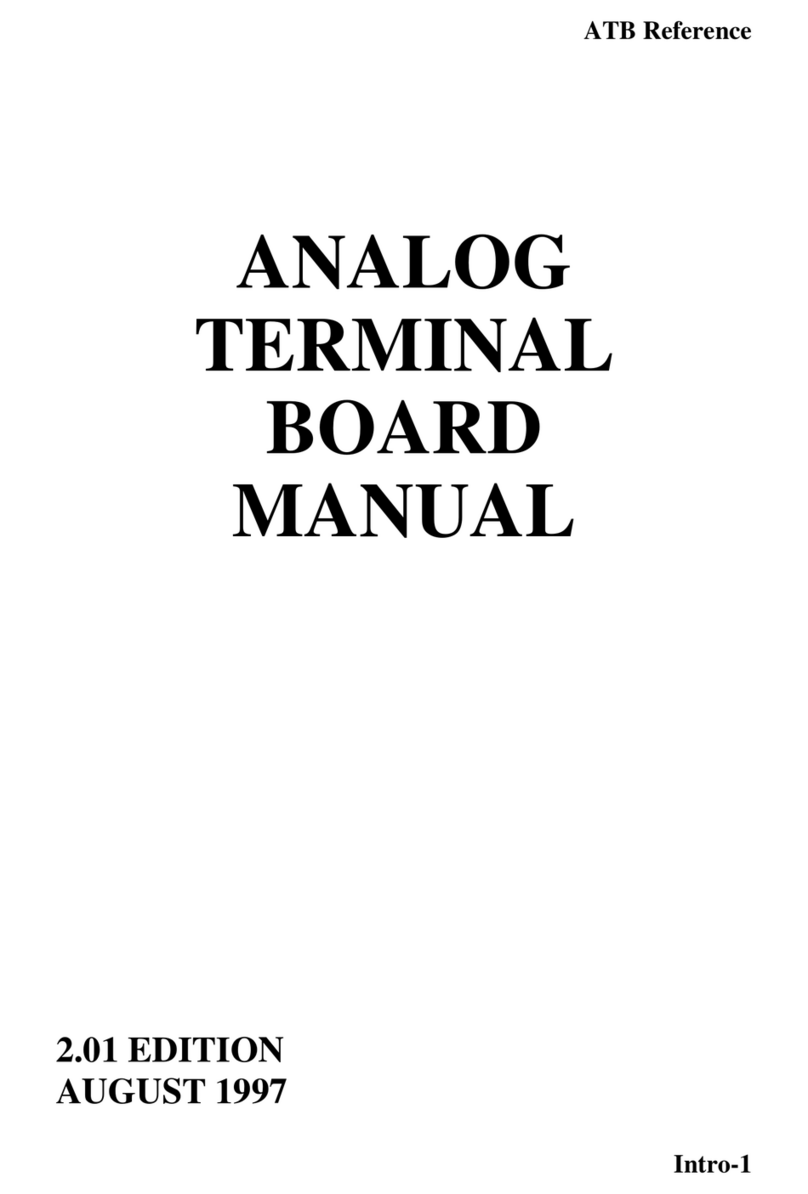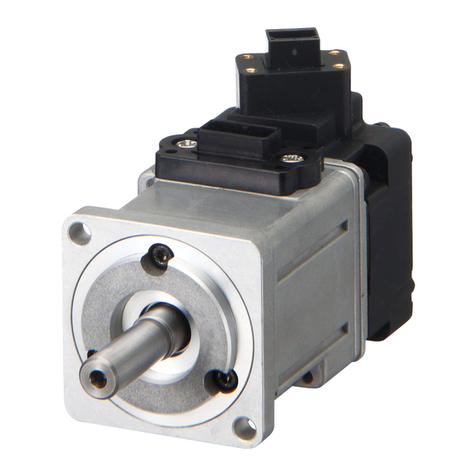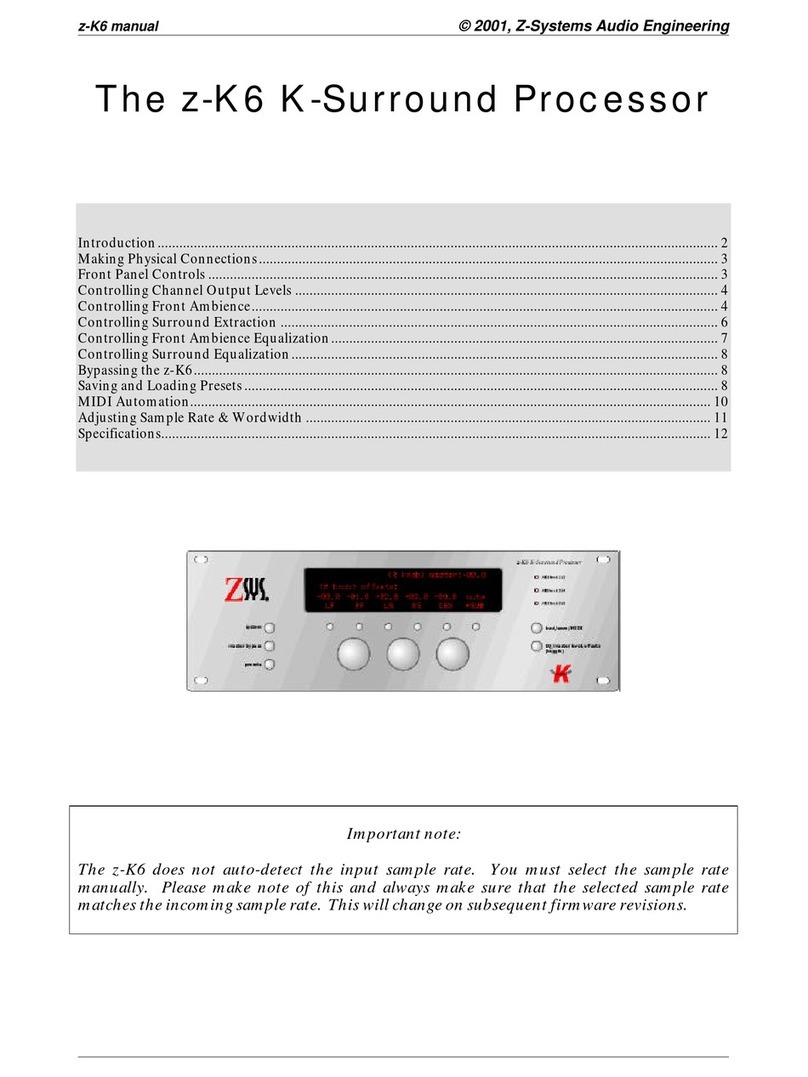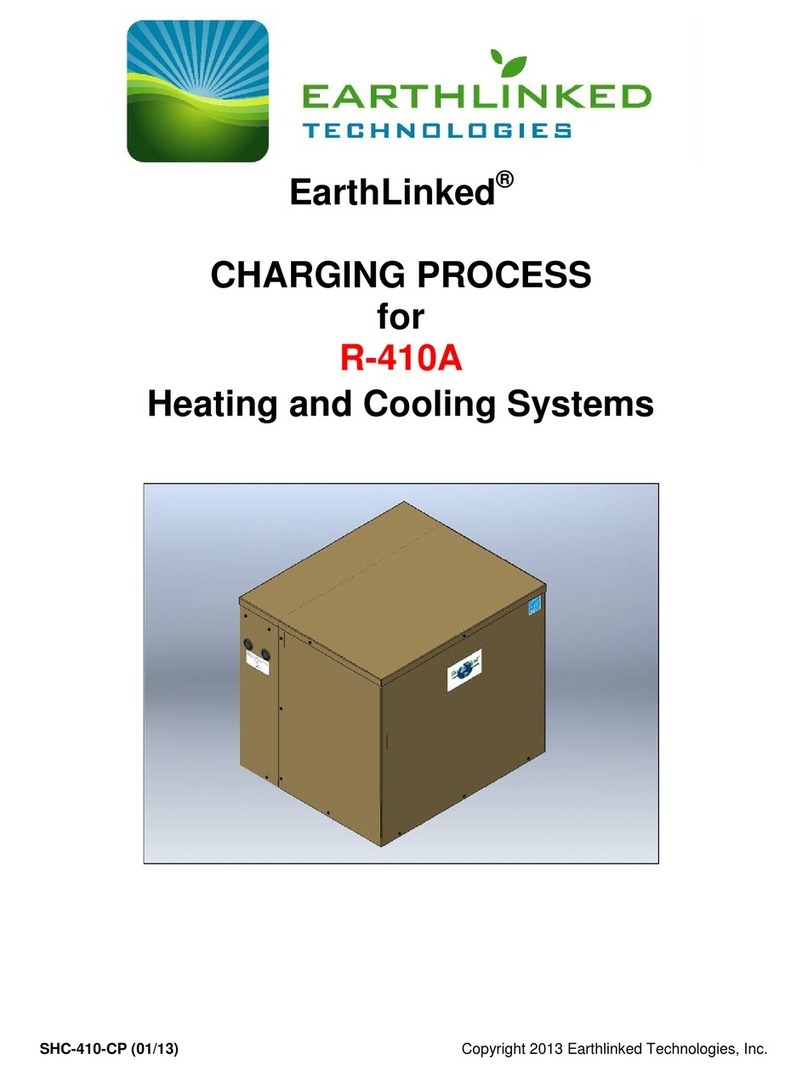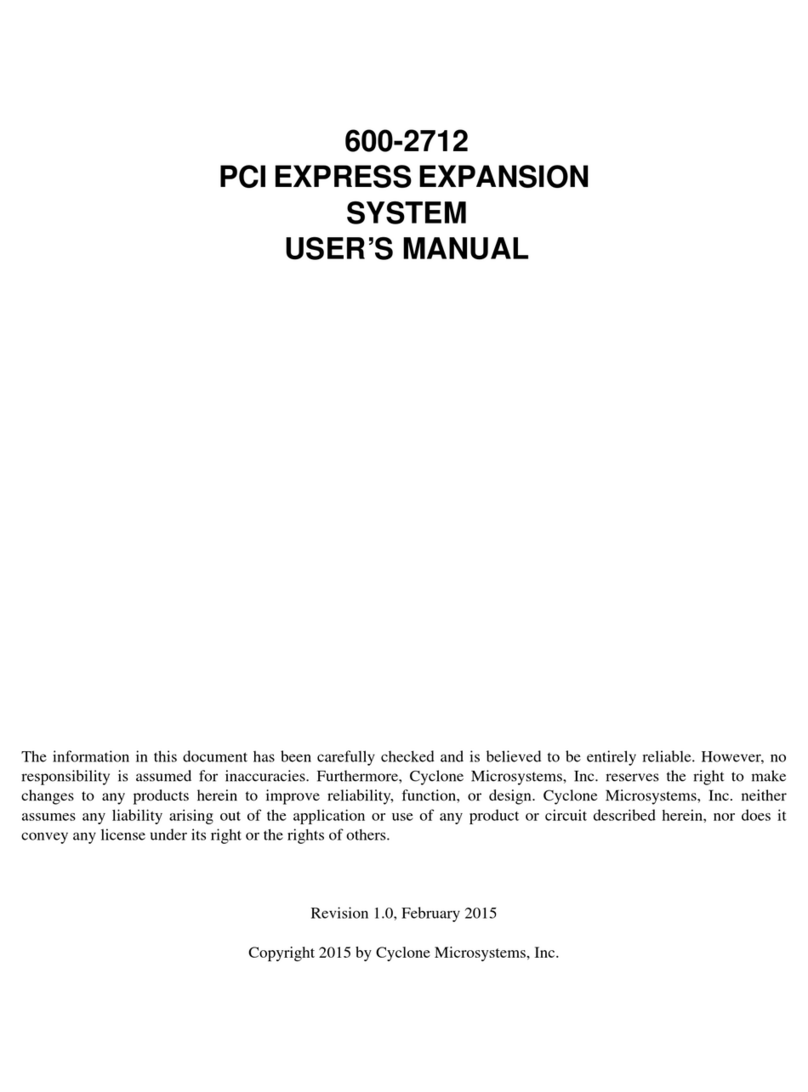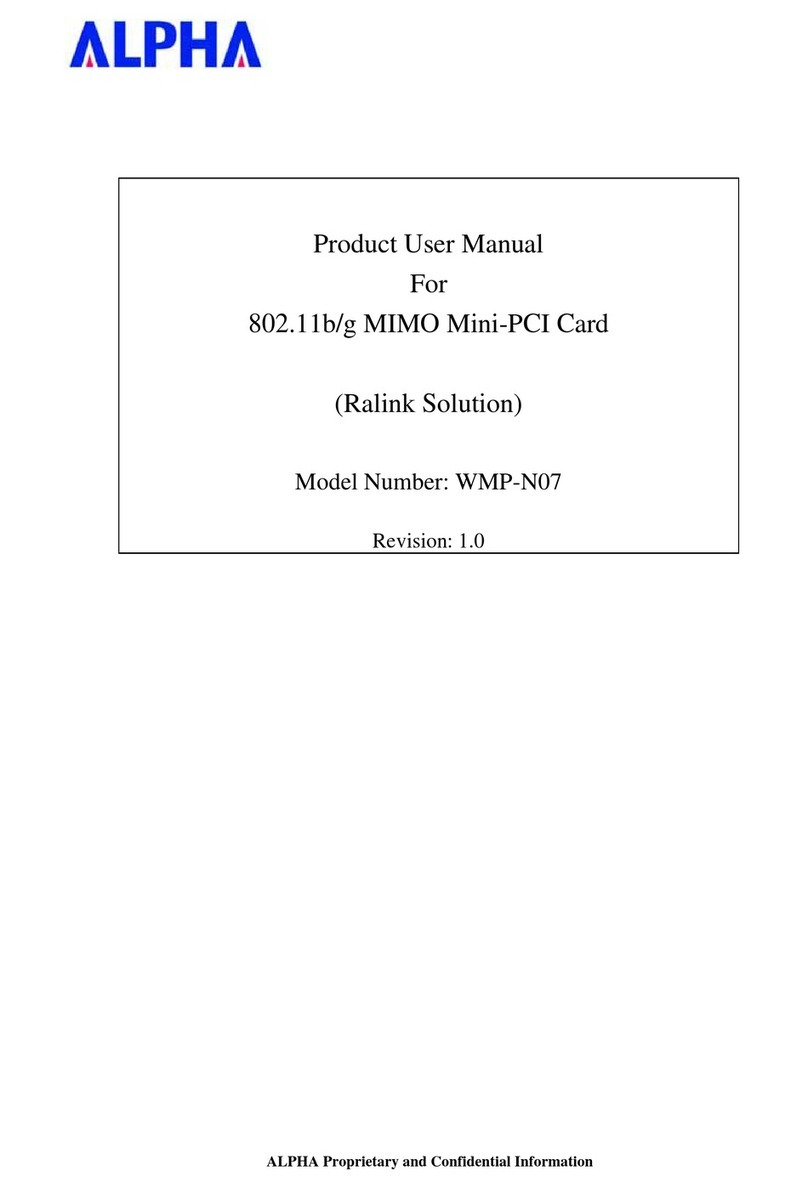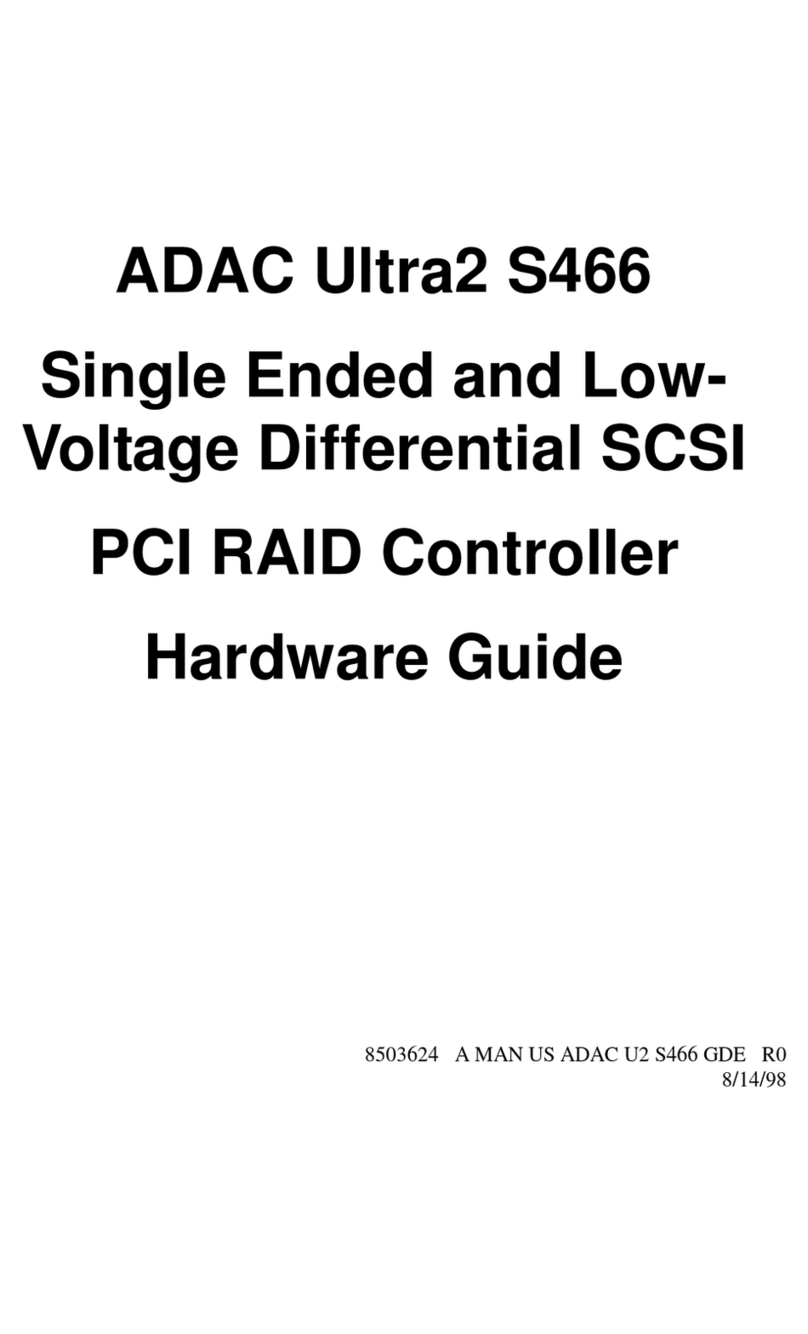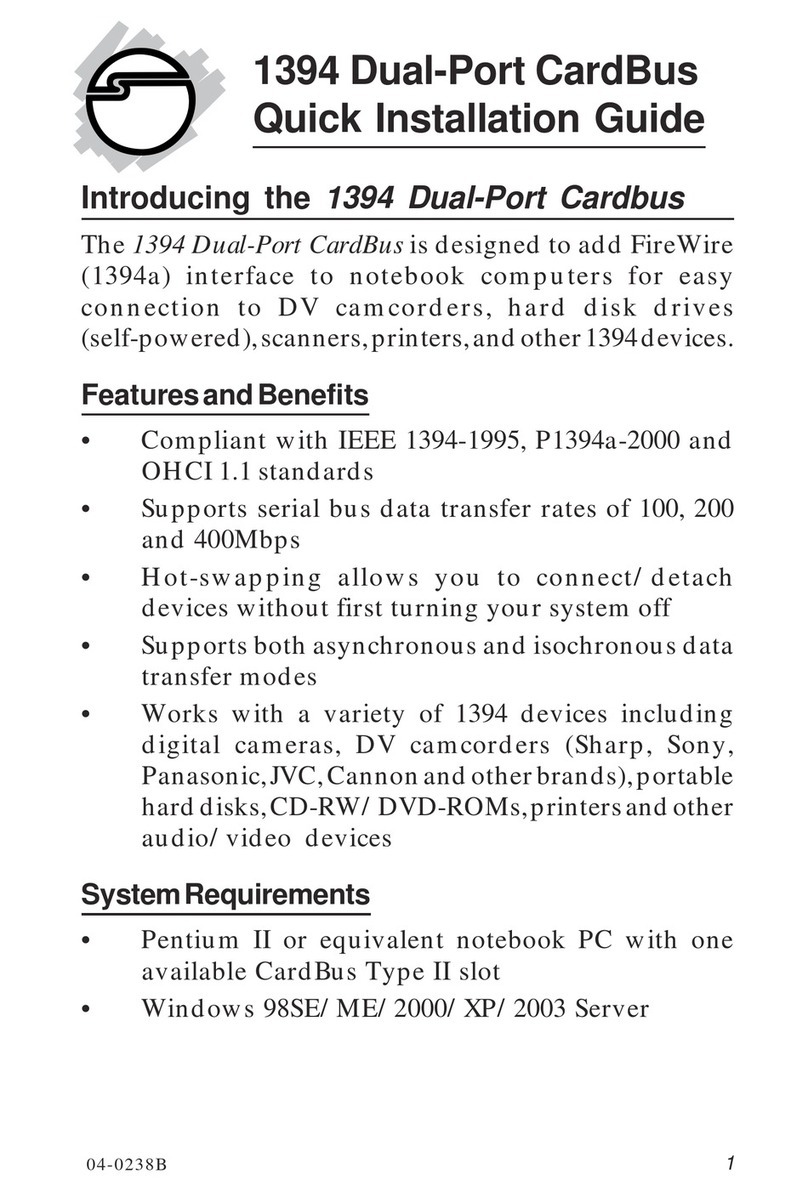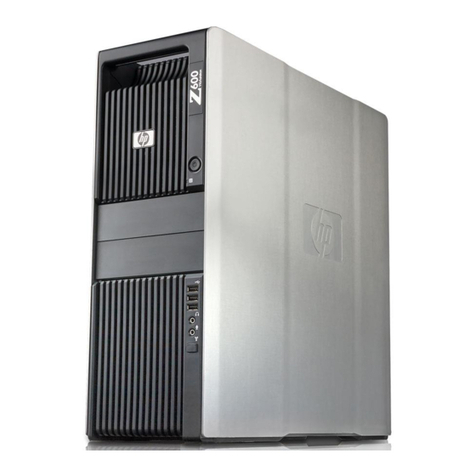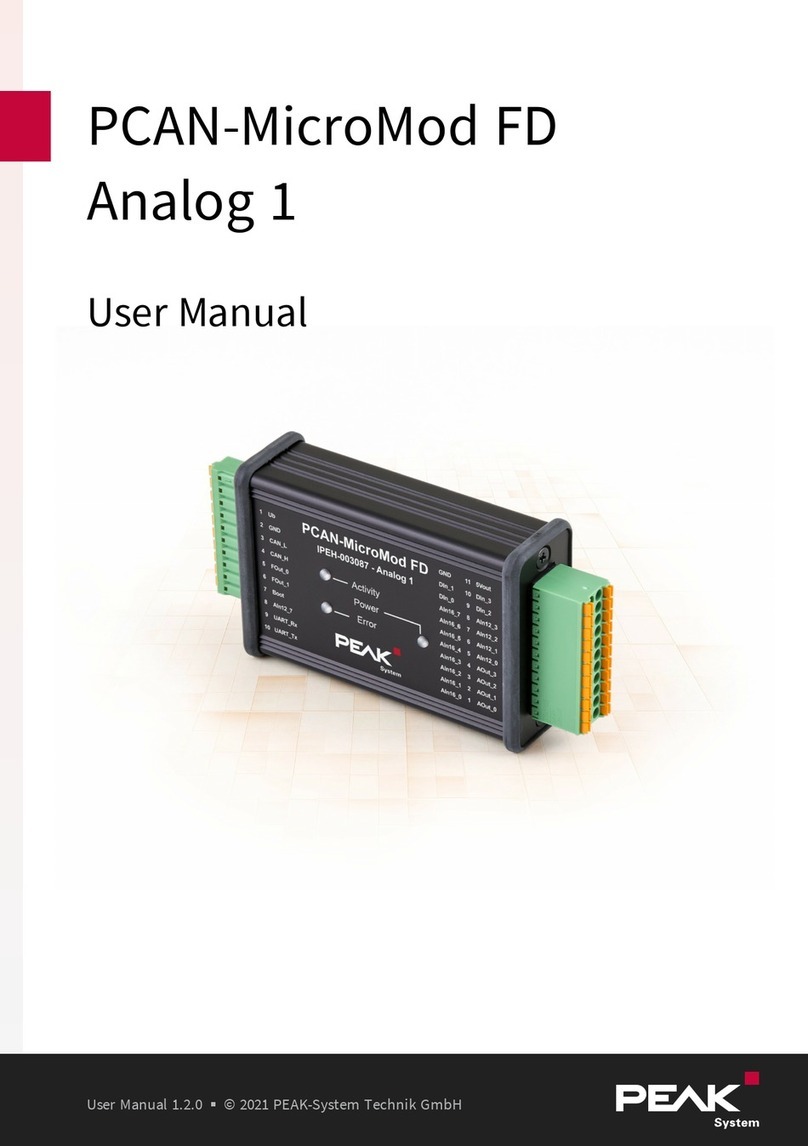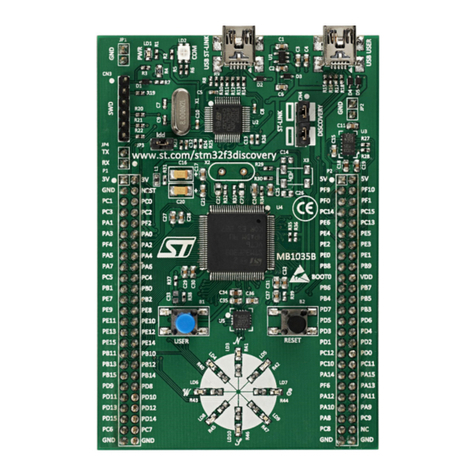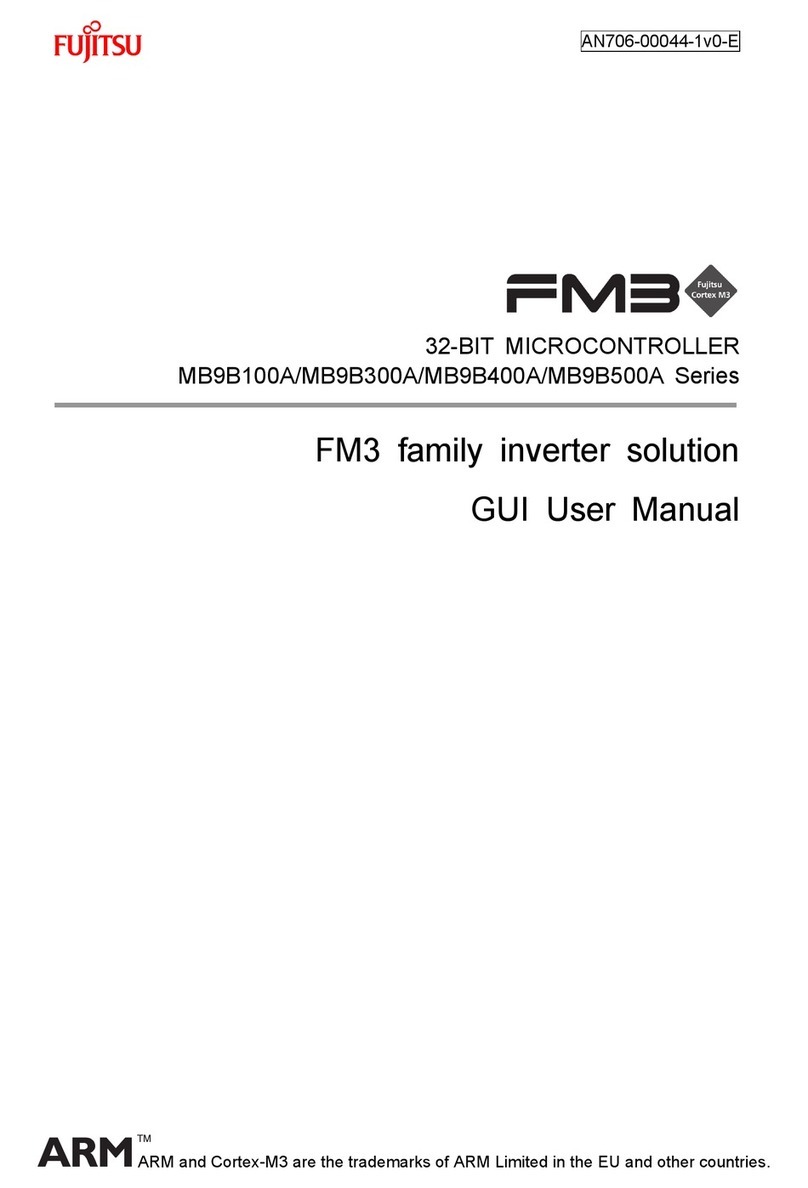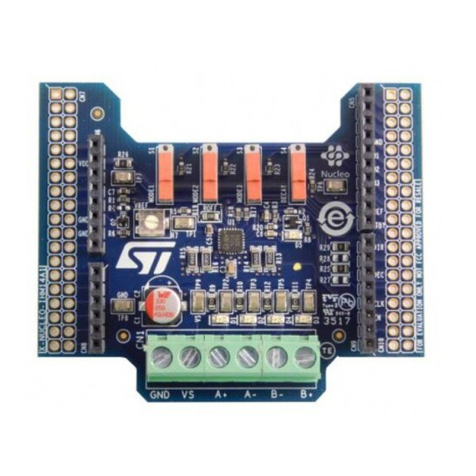Brainboxes IE-285 User manual

BRAIN BOXES______________
PC ELITE
4.6 EDITION March, 1995

Guarantee.
FULL 36 MONTHS GUARANTEE.
BRAIN BOXES guarantee your IEEE 488 Interface Board and Soft-
ware for a full 36 months from purchase, parts and labour, provided it
has been used in the specified manner. In the unlikely event of failure
return your IEEE 488 Interface and Software to BRAIN BOXES or
to your Dealer, with proof of purchase, who will determine whether
to repair or replace this product with an equivalent unit.
COPYRIGHT.
COPYRIGHT © 1985-1997 BRAIN BOXES.
All rights reserved. No part of this hardware, circuitry or manual may
be duplicated, copied, transmitted or reproduced in any way without
the prior written consent of BRAIN BOXES.
PC Elite is designed, manufactured and supported by
BRAIN BOXES.
Unit 3C, Wavertree Boulevard South,
Wavertree Technology Park,
Liverpool, L7 9PF,
England.
Telephone: 0151-220 2500
Fax: 0151-252 0446
E-mail: [email protected]
Web: www.brainboxes.com
ACKNOWLEDGEMENTS.
BRAIN BOXES is a trademark of BRAIN BOXES.
IBM, Commodore, COMPAQ, Olivetti, AMSTRAD, Hewlett
Packard, H.P. and EPSON are trademarks of the relevant compa-
nies. OS/2 and Microchannel Architecture are trademarks of IBM.
Windows is a trademark of Microsoft.

PC Elite Reference
Warning!.Warning!._________
Unauthorised copying of Pro-488 is a crime!
Although public domain programs allow unlimited copying,
and much commercial software allows copying provided the
program purchased is only in use on only one machine at a
time, many programs specifically forbid copying of
proprietary material. The copyright laws of most countries
forbid unauthorised copying of computer programs without
the authors permission. Thus you will be committing a crime
when unlawfully copying programs from one machine to
another, and so will be liable to arrest.
Software authors, like the author of Pro-488, earn their
living from revenue due to sales of their programs, it is
legally and morally wrong to steal their income by misuse of
a computers copy routines. In these circumstances you
should buy extra copies of the program.
Don’t make yourself in to a thief! Moral debilitation will
result from habitually committing these crimes. You have
been warned.!
Licences allowing multiple copies of Pro-488 are available
from your supplier!
33

PC Elite Reference
Thank You For Buying The
PC Elite IEEE 488
Interface!
We proudly present the PC Elite IEEE 488 Interface Board.
PC Elite IEEE 488 gives the PC user precise control over
the huge range of industry standard IEEE 488 devices.
Your board is designed and manufactured in England, and
our policy is one of complete support to our dealers and direct
to our users. Please note, PC Elite is designed ’in house’ and is
completely understood by our staff. Its great strength is the
software support we give it. Our intention is to supply the
software and any technical information you may need to allow
you to exercise complete control over the PC Elite IEEE board
and IEEE devices. After searching the manuals, do not hesitate
to contact us on our HOTLINE numbers given on Intro Page-2
if you need help.
We are particularly keen to provide new operating system
or language drivers to expand the range of applications using our
PC Elite IEEE board.
We trust that if you adhere to the following procedures you
will enjoy many years of useful service from your IEEE 488
interface.
44

PC Elite Reference
PC Elite MANUAL_________________
The Layout Of This Manual._________________________
This manual is a complete description of how to install and
configure the PC Elite IEEE interface board.
The PC Elite card, like our PC IEEE board, is an extremely
easy to use and understand implementation of the IEEE-488
interface for IBM PC and compatible computers. We have truly
tamed the PC and the GPIB BUS allowing you to get the most
out of your IEEE devices!
Chapter 1, Joining The Elite, discusses the features
of the Elite card, mentions programs and languages that will
drive the Elite card and explains its how its high specification
custom design whilst retaining exact compatibility with other
manufacturers designs gives it extreme flexibility in its
application and use. Finally, the perfect companion product for
the Elite card, the Professional 488 Device Driver development
environment is introduced.
Chapter 2, Installation Guide, shows you how to
configure and install the PC Elite board in one of the expansion
slots of your computer.
Chapter 2, The Technical Details, gives much
technical information on the Elite card. Whilst most users will
find this information be be unnecessary it is included to make
this manual as complete as possible, to allow you to cover every
eventuality.
The Cumulative Index covers the complete contents of
the manual.
55

PC Elite Reference
Contents________
Chapter 1 Joining The Elite.
Introduction. 1
What Machine Do You Need? 1
Elite Features. 2
Interrupt Selection. 2
Direct Memory Access Channels. 2
Address Switches. 2
Software Support. 3
Introducing Professional 488. 3
Outline. 4
The Professional-488 Environment. 4
Learn How To Use It In Minutes. 5
Basic ON SRQ Facility. 5
PRO-488 Command Summary. 5
Sending Data To Bus Devices. 6
Receiving Data From Bus Devices. 6
Program Examples. 6
Quick Basic Example. 7
Turbo Pascal Example. 7
Microsoft \ Lattice C Example. 7
Fortran Example. 7
IEEE Bus Commands And Functions. 8
GPIB.COM Driver. 9
Documentation, Cabling and Technical Backup. 9
Chapter 2 Installation Guide.
Introduction. 10
Configuring The PC ELITE IEEE Board. 10
The DIP Switches And Jumper Blocks. 11
Setting The I/O Address. 11
Interrupt Selection. 13
Setting The Interrupt Jumper Block. 13
Setting The Interrupt Clear Address. PC2A Only 15
DMA Selection. 15
Setting The DMA Jumper Block. 16
Using More Than One PC ELITE IEEE Board. 17
Installing The PC ELITE Board In The Computer. 18
66

PC Elite Reference
Connecting To IEEE Devices. 20
Problems! 22
Chapter 2 List Of Figures.
Figure 2-1. The ELITE Factory Set DIP Switches. 12
Figure 2-2. Valid PC ELITE IEEE Base Addresses. 12
Figure 2-3. The IRQ Jumper Block. 14
Figure 2-4. The PC2a Mode IRQ Clear Address. 15
Figure 2-5. The DMA Jumper Block. 16
Figure 2-6. Remove Cover Mounting Screws. 18
Figure 2-7. Removing The PC Cover. 18
Figure 2-8. Removing Blanking Cover. 19
Figure 2-9. Inserting The PC ELITE IEEE Card. 19
Figure 2-10. An IEEE Cable. 20
Figure 2-11. Connecting The PC To The IEEE Bus. 21
Figure 2-12. Standard IEEE 488 Connector Pinouts. 21
Chapter 3 Technical Details.
Introduction. 23
Specification. 23
Hardware Specification. 23
The NEC 7210 Chip. 24
The PC Elite Subsets Supported. 25
NEC 7210 Register Map. 26
The I/O Address Base Address. 27
Interrupt Selection. 28
SRQ Service ReQuest. 29
The Auxiliary Mode Register. 29
IFC InterFace Clear. 30
REN Remote ENable. 30
ATN ATteNtion. 30
Chapter 3 List Of Figures.
Figure 3-1. PC Elite Board Interface Capability. 25
Figure 3-2. PC2a Mode NEC 7210 Register Map. 26
Figure 3-3. Read Register Bits. 27
Figure 3-4. Write Register Bits. 28
Figure 3-5. Interrupt Status Bits. 29
77

Join The Elite. PC Elite Reference
CHAPTER 1
JOINING THE
Elite.
Introduction.____________
This chapter, Joining The Elite, discusses the features of
the Elite card, mentions programs and languages that will drive
the Elite card and explains its how its high specification custom
design whilst retaining exact compatibility with other
manufacturers designs gives it extreme flexibility in its
application and use.
Finally, the perfect companion product for the Elite card,
the Professional 488 Device Driver development environment is
introduced, it is a simple straight forward method for writing
both DOS and Windows programs. Pro-488 is available as a
stand alone product and is especially cost effective when bundled
with an Elite card or sold with a site licence.
An alternative software interface is available for the Elite
cards, our GPIB.COM driver. Our GPIB.COM has the same
calling mechanism and conventions as the widely available NI
product. Use GPIB.COM to maintain backwards compatibility
with existing applications.
What Machine Do You Need?__________________________
The PC Elite IEEE board and software will run on any
industry standard PC compatible including the 386, 486, DX2
and Pentium machines.
The PC Elite card will fit in the half size or full size slots
on your computer. You can use any version of DOS, Windows
or OS/2 in a DOS window.
Use our PS Elite/2 card with Micro Channel Architecture
bus computers.
Chapter 1 1-1

PC Elite Reference Join The Elite.
Elite Features._____________
The PC ELITE card extracts the ultimate IEEE-488
performance from your Personal Computer. Using 4 custom
programmed logic chips we have taken PC based IEEE cards to
the limit. PC ELITE is a half size card that fits any PC or AT
slot. ELITE has the complete Controller, Listener and Talker
ability. True flexibility with a choice of 3 DMA channels, 10
interrupt lines and 7 I/O addresses.
Elite is based on the highly popular NEC 7210 GPIB
Controller chip, with 4 supporting custom programmed logic
chips controlling DMA, Interrupt sharing and address decode.
DMA data transfer rates exceed 300K bytes per second. The
ELITE card is as rugged as your PC.
Interrupt Selection._________________
The interrupt hardware allows jumper selection of one of
ten PC interrupt request lines, IRQ2 to IRQ7, IRQ10 to IRQ12
and IRQ15. The PC ELITE interrupt logic allows interrupt
sharing with third party cards. 13 interrupt sources are software
selectable providing ultra-flexible interrupt driven data transfers.
Direct Memory Access Channels._____________________________
The DMA hardware allows jumper selection of one of
three PC direct memory access channels for high speed data
transfers, DRQ1-3. The PC ELITE allows DMA interrupt sharing
with third party cards. DMA data transfer rate exceeds 300K
bytes per second.
Address Switches.________________
The DIP switches give the ELITE card the choice of 7 i/o
addresses 02E1H, 22E1H, 42E1H, 62E1H, 02B8H, 02C0H or
0300H. Elite is switchable between PC2 and PC2a compatibility.
Four ELITE cards provide access to 56 IEEE instruments.
1-2 Chapter 1

Join The Elite. PC Elite Reference
Software Support.________________
The low cost and high performance of PC data acquisition
and analysis software packages combined with the ELITE card
makes them ideal as powerful and inexpensive instrument
controllers. Keep your technology advancing whilst your capital
investment stays low!
PC ELITE is fully compatible with Lotus Measure,
LabTech NoteBook, Asyst, DaDisp, DaDisp 488, Lab Windows,
Test Windows, Unkelscope, TBasic, True BASIC, National
Instruments IEEE software, IBM’s own GPIB software and all
software that supports the IBM GPIB card.
The ELITE card will run many of the above programs
without any modification.
Some of the above software eg Lab Windows requires the
use of a driver similar to the NI GPIB.COM drivers allow this.
We have written our own GPIB.COM style drivers in house.
The GPIB.COM driver for DOS is order code IE-736. The
GPIB.COM driver for WINDOWS is order code IE-747. More
details about GPIB.COM are given later in this chapter.
To run Elite under Windows or under DOS with
QuickBasic, Pascal, C, Assembler, Fortran etc use the
Professional 488 driver available from your dealer.
Introducing Professional 488.__________________________
The perfect partner for the ELITE card is Professional-488,
the best PC based IEEE software in the world! Pro-488 makes
the ELITE card an integral part of your PC, controlled by an
enhanced Hewlett Packard style syntax that runs all DOS
languages. Pro-488 makes ELITE compatible with Windows,
Visual Basic, Visual C++, Turbo Pascal for Windows, DOS
BASICA, GWBASIC, Complied BASIC, Quick Basic, Turbo
Basic, Turbo Pascal, Turbo C, Lattice C, Aztec C, Zortech C,
Prospero Pascal, Microsoft C Pascal, MS Fortran, MS
Assembler, FS Fortran and many more languages.
Chapter 1 1-3

PC Elite Reference Join The Elite.
Outline._______
The Professional-488 software system allows any PC with
an IEEE-488 interface to become an IEEE bus controller,
exercising complete control over a bus full of up to 14 IEEE
instruments. An easy to use, flexible, enhanced industry standard
control language addresses the IEEE devices and provides
complete instrumentation control. The heart of the Pro-488 is the
device driver software that loads automatically when your PC is
switched on. After that, your PC has access to an IEEE port in
the same way as the other resident ports LPT1 or COM1. The
Professional-488 Device driver makes full use of all the
advanced features of your PC. We believe that software sells
hardware and that is why we made Professional-488 the perfect
companion for PC ELITE IEEE and PC IEEE cards.
The Professional-488 Environment._______________________________
Profession-488 is the ideal development environment for
IEEE based data acquisition and control. Pro-488 is more than
just an instrumentation shell, its a mature carefully thought out,
PC based implementation, of a superset of Hewlett Packard’s
HPIB language. The commands and your programs read just like
plain English and so program development and maintenance time
are cut to an absolute minimum. Since your time is extremely
valuable we made Pro-488 code easy to write, simple to debug
and a pleasure to read. Pro-488 runs identically across the range
of DOS languages. The syntax, parameters and returns of the
Pro-488 system remain the same, independent of the language
that you are running. No extra language drivers or run time
modules are needed to implement a new language. So you can
use the IEEE system with the language of your choice. The bus
status string contains a wealth of information about the state of
the IEEE bus and is easily processed in any language. Pro-488 is
feature rich, with a wide range of commands, from the lowest
level, of individual line control, right up through single word
commands that perform or initiate whole sequences of bus
actions. Its IEEE-488 without the sweat!
1-4 Chapter 1

Join The Elite. PC Elite Reference
Learn How To Use It In Minutes._____________________________
Since the Professional-488 talks the established IEEE
control language, you probably already know how to use it! A
good way of learning how to use the Professional 488 is inter-
actively from the keyboard of your Personal Computer using the
GPIBTALK suit of programs. Included on the Professional 488
system disk is the source code, and the ready run versions of,
GPIBTALK in each of four languages. ATALK in Assembly
language, CTALK, PASTALK and GPIBTALK in GW-BASIC
and BASICA. These powerful programs are a menu driven sys-
tem that allows you to send IEEE commands, transmit and
receive data from your bus devices and check the status of the
GPIB interface bus, all at the touch of a single key. In this way
the user can get a good feel of the power and ease of use of the
Professional 488 command language in a very short time. Most
IEEE equipment includes worked examples that are virtually
word for word PRO-488 commands!
Basic ON SRQ Facility._____________________
From BASIC the ON PEN GOSUB command can be used
to invoke an SRQ service routine to provide automatic serial
polls etc.
PRO-488 Command Summary.___________________________
The basis of the PRO-488 system is an intelligent
command handler. Data written to the "IEEECTRL" file is
treated as an Ascii string containing IEEE bus keywords and
parameters. These keywords are commands to perform Serial or
Parallel Polls, send any IEEE bus commands or specify the
timeout period, etc etc.
The command interpreter checks the syntax of your IEEE
string and performs the appropriate IEEE actions. If a syntax
error is detected the precise location of the error is noted and a
flag is set. Merely checking the error flag informs you whether
Chapter 1 1-5

PC Elite Reference Join The Elite.
any mistake was made, other flags show whether a device is
present on the bus and the state of the data transfer.
Sending Data To Bus Devices.__________________________
Data can be sent to the IEEE bus devices in several ways.
The simplest and most straight forward method is by writing
data to the "IEEEDATA" file, PRO-488 automatically addresses
the current device to listen and the PC outputs your data, as easy
as that!
Alternatively, data can be sent via the "IEEECTRL" file
using one of three methods:- as specified by decimal numbers
after a DATA or EOI command, as literal data within delimiters
after a STRING command, or as literal data within delimiters
after an OUTPUT command.
LISTEN 5 DATA 72,69,76,76,79 UNL <CR>
LISTEN 5 STRING "HELLO" UNL <CR>
OUTPUT "HELLO" <CR>
Receiving Data From Bus Devices.______________________________
Data can be input from the current IEEE bus device by a
read of the "IEEEDATA" file, just like reading disk data!
Alternatively, data can be requested from any IEEE bus
device, via the "IEEECTRL" file using the ENTER command.
ENTER 200 <CR>
Both these methods are very flexible, a complete bus
handshake sequence is performed with the current device being
addressed to talk. The input sequence is terminated by the
receipt of the number of bytes specified or by EOS received.
Program Examples._________________
Here are four example programs that demonstrate the
power and ease of use of Pro-488. Each places a D.V.M. under
PC control, programs the meter’s range and function with the
1-6 Chapter 1

Join The Elite. PC Elite Reference
R3T3X command, inputs a reading from the D.V.M. and then
displays it on the PC screen.
Quick Basic Example.___________________
10 OPEN "IEEECTRL" AS #1
20 OPEN "IEEEDATA" AS #2
30 PRINT#1,"REMOTE 5 OUTPUT ’R3T3X’"
40 READING$=IOCTL$(2)
50 PRINT READING$
Turbo Pascal Example._____________________
VAR
buffer : String[255];
ieeedata,ieeectrl : Text;
BEGIN
Assign(ieeectrl,’IEEECTRL’);
Rewrite(ieeectrl);
Assign(ieeedata,’IEEEDATA’); Reset(ieeedata);
Writeln(ieeectrl,’REMOTE 5 OUTPUT "R3T3X"’);
Readln(ieeedata,buffer);
Writeln(buffer);
Close(ieeedata); Close(ieeectrl);
END.
Microsoft \ Lattice C Example.___________________________
#include <stdio.h>
int ieeedata,ieeectrl;
char buffer[255];
void main(){
ieeedata=open("IEEEDATA",O_RDWR O_BINARY);
ieeectrl=open("IEEECTRL",O_RDWR O_BINARY);
write(ieeectrl,"REMOTE 5 OUTPUT ’R3T3X’\n",24);
read(ieeedata,buffer,255);
printf("%s\n",buffer); }
Fortran Example.________________
CHARACTER BUFFER*255
OPEN(1,FILE=’IEEECTRL’,STATUS=OLD, ACCESS=’SEQUENTIAL’)
OPEN(2,FILE=’IEEEDATA’,STATUS=OLD, ACCESS=’SEQUENTIAL’)
WRITE(1,*)"REMOTE 5 OUTPUT ’R3T3X’"
READ(2,*)BUFFER
WRITE(*,*)’’,BUFFER
Chapter 1 1-7

PC Elite Reference Join The Elite.
IEEE Bus Commands And Functions._________________________________
ABORT Resets bus, pulse IFC, assert REN, assert ATN.
BASE= Sets the IEEE board base i/o address.
CLEAR Returns some or all devices to predetermined state.
CONFIGURE Specifies how device responds to PPOLL.
DISABLE Prevents some or all devices responding to PPOLL.
END= Sets End of Sequence method for OUTPUTs.
ENTER Ask for data from IEEE device.
EOS= Specifies EOS byte for IEEE data INPUTs to PC.
INIT Restores IEEE bus and driver to defaults state.
LOCAL Enable front panel control. REN, ATN sent false.
LOCKOUT Disable front panel controls. Performs LLO.
NO TO Disables time out.
OUTPUT Sends literal data string to addressed devices.
PPOLL Performs a complete Parallel Poll
READ Reads one byte of data from addressed talker.
REMOTE Puts some or all devices under PSI BOX control.
SLAVE Puts PC into peripheral mode.
SPOLL Serially Polls one or more devices.
STRING Sends literal data string to current bus device.
TO Sets an i/o timeout value.
TRIGGER Initiates pre programmed action in devices.
UNCONFIGURE Prevents devices responding to Parallel Poll.
WAIT SRQ Waits till SRQ is asserted by device.
WAIT MLA Waits till PC is addressed to listen.
WAIT MTA Waits till PC is addressed to talk.
NO ATN Set ATN false.
NO REN Set REN false.
LISTEN Sends one or more Listen Addresses.
ATN Asserts ATN line true.
CMD Send byte ATN true.
DATA Send byte ATN false.
DCL Device Clear.
EOI Send DATA with EOI true
GET Group Executive Trigger
GTL Go To Local.
IFC Pulse IFC for 100 microsec
LAG Listen Address.
LLO Local Lockout.
MLA Set/ Send My Listen Address.
MTA Set/ Send My Talk Address.
MSA Set/ Send My Secdry Address.
PPC Parallel Poll Configure.
PPD Parallel Poll Disable.
PPE Parallel Poll Enable.
PPU Parallel Poll Unconfigure
REN Asserts REN line true.
SDC Select Device Clear.
SEC Secondary Address.
1-8 Chapter 1

Join The Elite. PC Elite Reference
SPD Serial Poll Disable.
SPE Serial Poll Enable.
TAD Sends Talk Address.
TALK Sends Talk Address.
TCT Take Control.
UNL Unlisten.
UNT Untalk.
GPIB.COM Driver._________________
Our 100% NI compatible GPIB.COM driver allows you to
maintain and run existing applications developed for use with
any NI card.
GPIB.COM is the binary device driver interface developed
by national Instruments and shipped with every one of their
IEEE cards. A large number of third part applications, as well as
NI’s own Lab Windows and Lab View products have been
written to work with this driver. Our GPIB.COM driver and its
associated BBCONF program are 100% compatible with the NI
driver allowing users to run all existing NI applications without
any change or recompilations whatsoever.
The higher performance Elite card with GPIB.COM allows
migration to a more cost effective platform.
Complete Documentation and Technical Backup.__________________________________________
We believe in supplying complete documentation with
every package we sell. The Pro 488 Driver is no exception, it
has an attractively laid out manual in an A5 binder with slip
case, containing over 400 pages of in-depth technical detail with
comprehensive indexes and table of contents. We guarantee your
Professional 488 Driver for a full 36 months from purchase. A
full technical backup service is available to ensure that you get
the maximum performance out of your investment.
Cabling Requirements.____________________
Try our low profile fully shielded IEEE cables, ideal for
the cramped spaces on the back of some very popular clones.
Chapter 1 1-9

PC Elite Reference Installation Guide
CHAPTER 2
PC ELITE
INSTALLATION
GUIDE.
Introduction.____________
This chapter explains how to configure and install the PC
ELITE IEEE board into an IBM PC computer. Detailed
instructions are given how to set the address select and interrupt
acknowledge DIP switches and how to position the IRQ and
DMA jumpers.
If the PC ELITE IEEE is to be installed in another make
of PC then it may be necessary to consult the instructions
included in that PC’s documentation.
The half size PC ELITE IEEE board will fit into both long
or a short slots, it can be placed in standard 8 bit PC slots or in
the longer 16 bit AT slots. If interrupts 10, 11, 12 or 15 are to
be used then the card must be installed in a 16 bit AT expansion
slot. If you have a Micro Channel Architecture computer such
as the IBM PS/2 Models 50, 60 or 80 or a Tandy 5000 M.C.
then you require our PS Elite/2 card instead.
Configuring The PC ELITE IEEE Board.____________________________________
In the state it leaves our factory, the PC ELITE IEEE 488
Interface Board is ready to plug straight into an IBM PC
computer.
So, unless you have GOOD REASON, you do not need to
alter its default setting.
2-10 Chapter 2

Installation Guide PC Elite Reference
However, due to the large variety of add-on boards that
may be present in the PC, your PC ELITE IEEE board may
need tayloring to suit your setup.
The DIP Switches And Jumper Blocks.__________________________________
The PC ELITE card has one 6 way DIP switch block, the
switches are clearly marked 1-6. DIPs 1-2 select the PC ELITE
card base address. DIP 3 selects PC2 or PC2a compatibility and
in conjunction with DIPS1-2 determines the cards base address.
DIPs 4-6 are used, in PC2a mode only, to select the interrupt
clear address, they have no effect in PC2 mode.
The PC ELITE card has two jumper blocks, each clearly
marked. One set of jumpers controls the interrupt request
selection the other the DMA channel selection. The IRQ jumper
block, can be set to produce IRQ interrupt signals - such as
when an IEEE device asserts its Service Request line, SRQ, to
signal that it has data ready for the PC. The DMA jumper block
can be set to allow Direct Memory Access i/o under various
circumstances.
These options are communicated by the user to the
computer using the Professional 488 Device Driver software or
via your third party IEEE software using its own set up or
configuration routine.
It is worth noting, that the PC ELITE IEEE i/o address
map, in PC2a mode, is identical to the IBM GPIB and the
classic National Instruments GPIB PC2A board and it will run
ALL software that these boards run. IBM’S GPIB, N.I.’S PC2A,
our PC IEEE and the PC ELITE cards can all co-exist happily
in the same computer provided that they are set to different i/o
addresses.
Setting The I/O Address.______________________
By referring to the PC ELITE IEEE card locate the I/O
Address DIP switches at the lower left hand corner of the board.
Chapter 2 2-11

PC Elite Reference Installation Guide
The PC ELITE IEEE board i/o address can be set to reside
at one of 7 base addresses in the PC. The factory set address,
02E1H, is set as shown in Figure 2-1. DIP switches 1-3 control
the ELITE card i/o base address select. DIP Switch 3 also
determines whether the Elite card is PC2a or PC2 compatible.
Figure 2-1. The ELITE Factory Set DIP Switches.___________________________________________
1-2 I/O Address select
ÚÁ¿
3 PC2- PC2a Select
³
³
³
4-6 IRQ Address Select PC2a Mode Only.
³
³
³
ÚÄÅÄ¿
³
³
³
³
³
³
å
on
ÚÄÄÄÄÄÄ¿
³æææååå³
æ
off
³
123456
³
ÀÄÄÄÄÄÄÙ
Factory Set Default Address= 02E1 Hex PC2a
Factory Set Default IRQ Acknowledge= Interrupt 7
Factory Set IRQ jumper select = Interrupt 7
Factory Set DMA jumper select = DMA channel 1.
Figure 2-2. Valid PC ELITE IEEE Base Addresses.____________________________________________
DIP 1 DIP 2 DIP 3 Address Type_____ _____ _____ _______ ____
Off Off Off 02E1 Hex PC2a Default assumed by DRIVER.
On Off Off 22E1 Hex PC2a Elite as IEEE Card Number 2
Off On Off 42E1 Hex PC2a Elite as IEEE Card Number 3
On On Off 62E1 Hex PC2a Elite as IEEE Card Number 4
Off Off On 02B8 Hex PC2 Elite as IEEE Card Number 5
On Off On 02C0 Hex PC2 Elite as IEEE Card Number 6
Off On On 0300 Hex PC2 Elite as IEEE Card Number 7
On On On AVOID DO NOT USE !
If you set the board to a different address to the factory
default then you will need to inform your software that you
intend to run about the new i/o address.
If you using the Professional 488 Device Driver software
2-12 Chapter 2

Installation Guide PC Elite Reference
then to inform the driver of the change in i/o address send the
BASE=22E1H, using the appropriate address, command to the
driver by placing it on the CONFIG.SYS invocation line eg
DEVICE=PRO488.SYS /BASE=22E1H
or after boot time by writing to the IEEECTRL file. The BASE=
command causes the IEEE card to be initialised and it will
become the system controller, the IFC line will be pulsed and
ATN and REN asserted true.
With GPIB.COM run the configuration program BBCONF.
Other software such as Lotus Measure, Asyst etc have their
own configuration routines. For Asyst you must type
LOAD CONFIG.GPB
and follow the instructions as described in Appendix A of the
Asyst GPIB manual.
Interrupt Selection._________________
The PC ELITE card can produce interrupts for one of 13
reasons and its INT line can be connected to one of the ten PC
Interrupt Request lines using the jumper on the IRQ block.
In PC2 mode any of IRQ2-7, 10-12 or 15 may be used.
In PC2a compatible mode, the IRQ hardware is designed
so that the ELITE board will continue to generate irq requests
until the source of the interrupt is cleared. This allows for
interrupt line sharing.
The interrupts are cleared by writing to 02FX where X=2-7
corresponding to the interrupt selected by the jumper on the
board. The position of the jumper MUST match the IRQ level
set in the software and the IRQ acknowledge address set on
DIPs 4-6. Only use IRQs 2-7 in PC2a compatible mode.
Setting The Interrupt Jumper Block.________________________________
For most users the factory set default IRQ 7 is best.
Chapter 2 2-13
This manual suits for next models
2
Table of contents
Other Brainboxes Computer Hardware manuals

